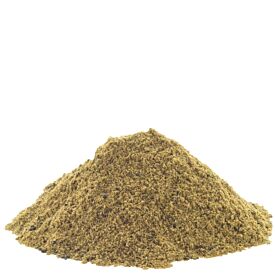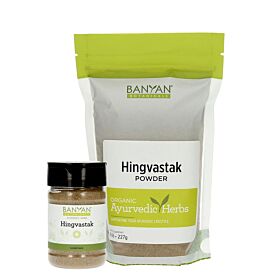Vata-Type Elimination

And remember to drink warm tea through the day!
Excess vata in the channel of elimination tends to cause scanty, dry, hard stools that can be difficult or strainful to pass. Vata can also cause occasional gas, bloating, gurgling intestines, irregularity, and constricted bowel movements.1 These symptoms are often accompanied by an irregular appetite and variable digestion.1, 2
Difficult Elimination During a Cleanse
It is very common for constricted or incomplete bowel movements to crop up during a cleanse, especially if it involves eating only kitchari, which is a particularly astringent food.
If you are interested in some gentle measures that you can take to support proper elimination during a cleanse, without drastically altering the structure of your cleanse, click here. That said, if you are working with a practitioner, it is always preferable to seek personalized support.
Balancing Vata
In general, when vata is elevated, we need to balance vata’s cold, dry qualities with warmth, oil, and lots of fluids in order to return to balance. It is therefore important to slow down, keep warm, and stay hydrated.
In addition, the following diet, lifestyle, and herbal recommendations will help to balance vata so that the channels of elimination can return to balance.
Diet
- Focus on eating a vata-balancing diet, and on eating three solid meals each day (ideally at about the same time each day).
- Increase the amount of quality oils in your diet (especially ghee, sesame oil, and olive oil).
- Drink at least 60–80 ounces of fluid each day. Water and herbal teas that are either warm or hot are best.
- Eat more fruit (at least one hour before or after other foods).
- Up other sources of fiber in your diet: oatmeal, wheat bran, oat bran, whole grains, and cooked vegetables.3
- Stoke the digestive fire about thirty minutes before lunch and dinner by chewing a slice of fresh ginger (about the size of a nickel) with a pinch of sea salt, a few drops of lime juice, and about ¼ teaspoon honey.
- Alternatively, you can take one or two Vata Digest tablets about thirty minutes before each meal.
Lifestyle
- Focus on establishing a vata-balancing daily routine; consistency in the structure of the day is especially balancing to vata.
- Get plenty of vata-balancing exercise:
- Make sure that your exercise routine is not overly stimulating, but gentle and grounding instead. Favor activities like walking, hiking, light jogging, swimming, or gentle cycling.
- Practice vata-balancing yoga or a handful of slow and purposeful Sun Salutations each morning.
- Practice 5–15 minutes of Alternate Nostril Breathing every day on an empty stomach.
Herbs
- Support your digestion and elimination with Vata Digest tablets or Hingvastak (the powdered form of Vata Digest that can be taken alone or sprinkled on your food).
- Consider taking Haritaki instead of Triphala to more specifically balance vata (if vata is truly the primary concern).
- Balance vata systemically with Healthy Vata tablets.
Additional Resources
Of course, an Ayurvedic practitioner can offer a more personalized perspective on the appropriate therapies for your unique situation. That said, if you are still hungry for more of the Ayurvedic perspective on digestion and elimination, you may find some of these resources helpful:
-
The Importance of Healthy Digestion
Symptoms in the channels of elimination are often the result of broader imbalances with agni (the metabolic fire). As an introduction to the critically important Ayurvedic concept of agni, this resource explores agni’s role in maintaining health and vitality throughout the body, and offers practical tools for kindling the sacred fire within. -
The Importance of Agni
This article explores the specific functions of agni, as well as the signs and symptoms of both healthy and impaired agni. -
The Four Varieties of Agni
This resource compares balanced agni to the different types of imbalances that can disrupt it, and offers appropriate therapies for each type of imbalance. -
Ama: the Antithesis of Agni
This piece introduces the toxic, undigested material called ama, whose qualities directly oppose those of agni. Ama in the body can either be the cause or the result of impaired agni—and in either case, threatens our health. -
Ayurvedic Guide to Healthy Elimination
This is a more comprehensive look at healthy elimination through the lens of Ayurveda; it highlights the importance of healthy elimination and offers some general tips for supporting proper elimination.










